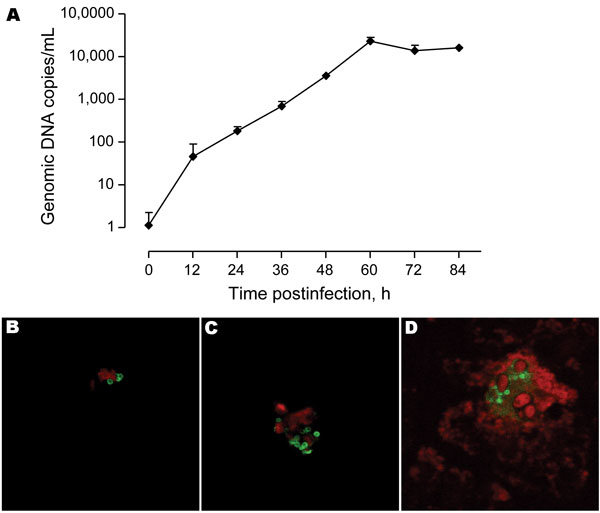Volume 14, Number 1—January 2008
Dispatch
Protochlamydia naegleriophila as Etiologic Agent of Pneumonia
Appendix Figure

Appendix Figure. A) Growth rate of Protochlamydia naegleriophila within Acanthamoeba castellanii assessed using a specific quantitative real-time PCR. Number of DNA copies present in culture are plotted according to time postinfection. Standard errors of the mean of duplicate experiments are shown. B) Indirect immunofluorescence preformed using rabbit anti-KNic antibody directly on the bronchoalveolar lavage showing the presence of few Pr. naegleriophila strain KNic or C) in clusters of this obligate intracellular bacteria. D) Immunofluorescence performed on amebal coculture showing the presence of Pr. naegleriophila. This strain was lost in subsequent passages.
Page created: July 07, 2010
Page updated: July 07, 2010
Page reviewed: July 07, 2010
The conclusions, findings, and opinions expressed by authors contributing to this journal do not necessarily reflect the official position of the U.S. Department of Health and Human Services, the Public Health Service, the Centers for Disease Control and Prevention, or the authors' affiliated institutions. Use of trade names is for identification only and does not imply endorsement by any of the groups named above.